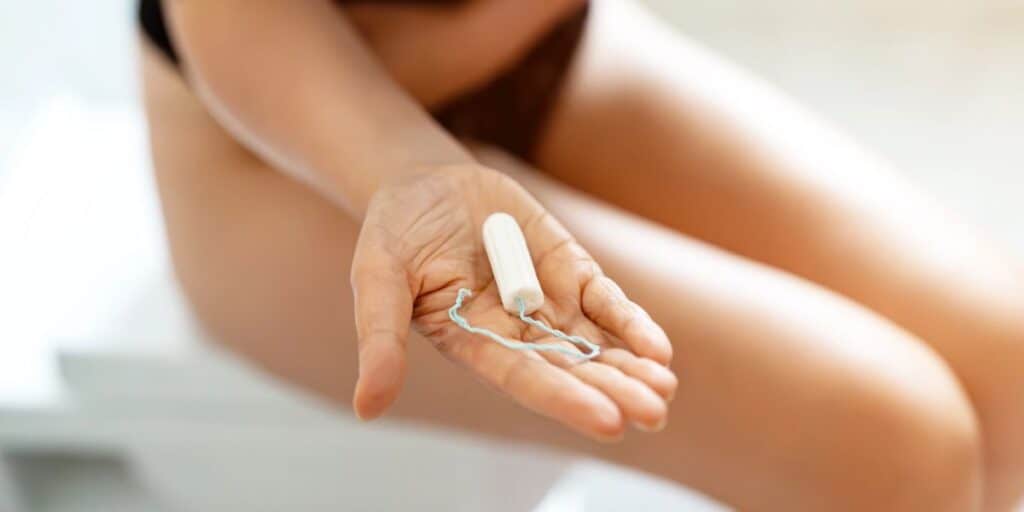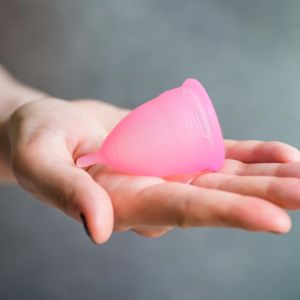A recent study published in Environment International raised important questions about the safety of tampons after finding small, yet still concerning, amounts of toxic metals in products sold in the United States and abroad. The measurable concentrations included metals such as lead and arsenic.
In a 2023 study of menstrual product preferences, 47% of participants trusted and used tampons regularly. This research left many questioning the safety of menstrual products.
Here’s how these metals could end up in tampons, what the findings mean for your health, and what you can do to make informed choices.

What did the study say?
In a new study, researchers at the University of California, Berkeley, tested 30 tampon products from 14 brands. In every sample, they found trace amounts of all 16 metals they tested for, including lead, arsenic, cadmium, calcium, chromium, and mercury. While the detected levels were low, the results are concerning because the vaginal mucosa, where tampons are used, is highly absorbent.
Additionally, any metals that leak out of tampons and are absorbed by vaginal tissue won’t be filtered by the liver. This means that any harmful substances could potentially enter the bloodstream more easily.
Lead was the most consistent finding across all the tested tampons from various product lines. The levels of other heavy metals in tampons, like arsenic and cadmium, also varied depending on the materials and where the tampons were sold. The U.S. Food and Drug Administration (FDA) regulates tampons as medical devices and is now leading its investigation into the findings.
How do these metals end up in tampons?

Metal found in tampons is likely the result of unintentional processes in production. Metal could come from environmental and agricultural factors, for example:
- Cotton contamination: Pesticides and fertilizers used in farming cotton can introduce metals like arsenic and lead.
- Manufacturing processes: The chemicals used during production could also contribute to contamination.
Interestingly, the study found that organic tampons had higher metal concentrations of arsenic, which might be linked to using natural fertilizers, as soil naturally contains arsenic. On the other hand, non-organic tampons tended to have higher levels of lead.
What are the potential health risks?
Exposure to toxic metals over time has been linked to serious health concerns.
- Lead: Even at low levels, exposure to lead concentrations can harm the nervous system, increase blood pressure, and negatively impact fertility.
- Arsenic: Known as a carcinogen, arsenic has been associated with an increased risk of cancers affecting the bladder, skin, and lungs.
- Cadmium and mercury: These metals can damage the kidneys, liver, and brain and harm reproductive health.
While it’s unclear how much exposure from tampons contributes to overall health risks, the fact that these products are used regularly and in close contact with absorbent tissues makes the findings especially concerning.
Are tampons safe to use?
It’s important to note that this study does not conclude that tampons are unsafe to use. The detected levels of metals were low, and researchers emphasized that more studies are needed to understand the actual risk. However, the findings do highlight an important lack of transparency and regulation.
In the U.S., U.K., or E.U., there are no specific requirements for testing menstrual products for toxic metals. This means manufacturers are not obligated to disclose or test for these contaminants. The study’s authors advocate for mandatory testing and greater transparency to protect consumers.
What can you do?
If you’re concerned about these findings, you’re not alone. Fortunately, there are some steps you can take to help reduce potential risks:
- Consider alternative menstrual products: Other feminine hygiene products, like menstrual cups, period underwear, or reusable pads, may provide peace of mind if you want to limit potential exposure to chemicals or metals.
- Stay informed: Follow updates on research and regulatory changes regarding menstrual products. Knowledge is your best tool for making informed decisions.
- Support transparency and regulation: Join conversations or advocacy efforts that push for stricter testing and labeling requirements for products used during your menstrual cycle.
- Switch brands or products: If you’re concerned about your current tampon brand, try others that align with your priorities, such as organic options or products marketed explicitly as non-toxic.
What’s next?
The discovery of toxic metals in tampons underscores the need for more studies and testing in the menstrual product industry. However, the study only evaluated the presence of metals in tampons; it did not link the metals’ presence and tampon use to adverse health effects. Still, it’s essential to prioritize your health by staying informed and making choices that feel right for you.
Have questions about your health? Talk to Dr. Aliabadi
Dr. Aliabadi is not only an expert OB/GYN but is knowledgeable in all aspects of women’s health and well-being. She and her caring, supportive staff are available to support you through menopause, childbirth, infertility, or even just routine gynecological care. She stays at the forefront of research and embraces a preventative approach, empowering you to prioritize and maintain your reproductive health.
We invite you to establish care with Dr. Aliabadi. Please make an appointment online or call us at (844) 863-6700.
The practice of Dr. Thais Aliabadi and the Outpatient Hysterectomy Center is conveniently located for patients throughout Southern California and the Los Angeles area. We are near Beverly Hills, West Hollywood, Santa Monica, West Los Angeles, Culver City, Hollywood, Venice, Marina del Rey, Malibu, Manhattan Beach, and Downtown Los Angeles.
Tampons FAQs
Are tampons toxic?
According to the study, toxic metals can potentially be in tampons. However, the research did not link metals in tampons to adverse health outcomes. More research is needed to determine if the metals in tampons can leach out, be absorbed by the body, and at what concentrations.
What chemicals are in tampons?
In addition to heavy metals, recent research has found that tampons can contain a variety of chemicals, including bisphenols, phthalates, parabens, volatile organic compounds (VOCs), fragrances for odor control, and polycyclic aromatic hydrocarbons (PAHs). All of these could potentially harm your health if absorbed into the bloodstream.
What in tampons causes toxic shock syndrome (TSS)?
Toxins produced by bacteria cause toxic shock syndrome (TSS). Tampons made from materials like rayon, a popular choice for its high absorbency, can create a favorable environment for bacterial growth if left in for too long. Some tampons are now treated with antimicrobial agents to help reduce this risk, but proper usage remains vital to prevention.
Sources
Tampons as a source of exposure to metal(loid)s.
https://doi.org/10.1016/j.envint.2024.108849.
First Study to measure toxic metals in tampons shows arsenic and lead, among other contaminants. https://www.publichealth.columbia.edu/news/first-study-measure-toxic-metals-tampons-shows-arsenic-lead-among-other-contaminants


